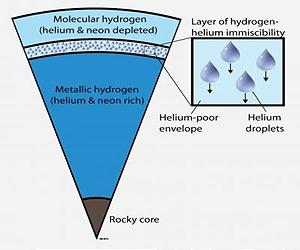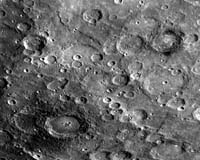|
 Helium Rain On Jupiter Explains Lack Of Neon In Atmosphere
Helium Rain On Jupiter Explains Lack Of Neon In AtmosphereBerkeley CA (SPX) Mar 23, 2010 On Earth, helium is a gas used to float balloons, as in the movie "Up." In the interior of Jupiter, however, conditions are so strange that, according to predictions by University of California, Berkeley, scientists, helium condenses into droplets and falls like rain. Helium rain was earlier proposed to explain the excessive brightness of Saturn, a gas giant like Jupiter, but one-third the mass. On Jupiter, however, UC Berkeley scientists claim that helium rain is the best way to explain the ... read more |
. |
|
|
Free Space, Earth, Energy And Military Newsletters - Delivered Daily |
| . | . |
| .. |
LRO Camera Releases Science Data From First Six Months Tempe AZ (SPX) Mar 18, 2010
Tempe AZ (SPX) Mar 18, 2010NASA is releasing to the Planetary Data System (PDS) the first six months of data acquired by the Lunar Reconnaissance Orbiter (LRO) spacecraft. The PDS serves as NASA's permanent online data archive providing these measurements to the science community and the world at large. This release includes data acquired between June 2009 and December 2009 by the suite of science instruments on the ... more New Planck Images Reveal Large-Scale Structure In The Milky Way  Paris, France (ESA) Mar 18, 2010
Paris, France (ESA) Mar 18, 2010New images from ESA's Planck mission reveal details of the structure of the coldest regions in our Galaxy. Filamentary clouds predominate, connecting the largest to the smallest scales in the Milky Way. These images are a scientific by-product of a mission which will ultimately provide the sharpest picture ever of the early Universe. ESA's Planck microwave observatory - the first European ... more Astronomers Observe Fast Growing Primitive Black Holes  Copenhagen, Denmark (SPX) Mar 18, 2010
Copenhagen, Denmark (SPX) Mar 18, 2010Quasars are active and very powerful black holes at the centre of distant galaxies. The black holes are extremely massive weighing between 100 million and 10 billion solar masses and rotating around the super massive black hole is a disc of gas and dust. The inner ring of the disc moves faster than the outer rings. The movement causes the material in the rings to rub against each other, he ... more |
.. |
 Ten Craters On Mercury Receive New Names  'Cool Jupiter' widens search for exoplanets  Instant online solar energy quotes Solar Energy Solutions from ABC Solar |
.. |
|
|
Free Space, Earth, Energy And Military Newsletters - Delivered Daily |
|
|
. |
 Simulations Solve A 20-Year-Old Riddle
Simulations Solve A 20-Year-Old RiddleNew York NY (SPX) Mar 17, 2010 New York NY (SPX) Mar 17, 2010 The birth of the most massive stars - those ten to a hundred times the mass of the Sun - has posed an astrophysical riddle for decades. Massive stars are dense enough to fuse hydrogen while they're still gathering material from the gas cloud, so it was a mystery why their brilliant radiation does not heat the infalling gas and blow it away. New simulations by researchers affiliated with the University of Heidelberg, American Museum of Natural History, the National A ... read more |
| The contents herein, unless otherwise known to be public domain, are Copyright 1995-2010 - SpaceDaily. AFP and UPI Wire Stories are copyright Agence France-Presse and United Press International. ESA Portal Reports are copyright European Space Agency. All NASA sourced material is public domain. Additional copyrights may apply in whole or part to other bona fide parties. Advertising does not imply endorsement, agreement or approval of any opinions, statements or information provided by SpaceDaily on any web page published or hosted by SpaceDaily. Privacy statement |
| Previous Issues | Mar 22 | Mar 19 | Mar 18 | Mar 17 | Mar 16 |